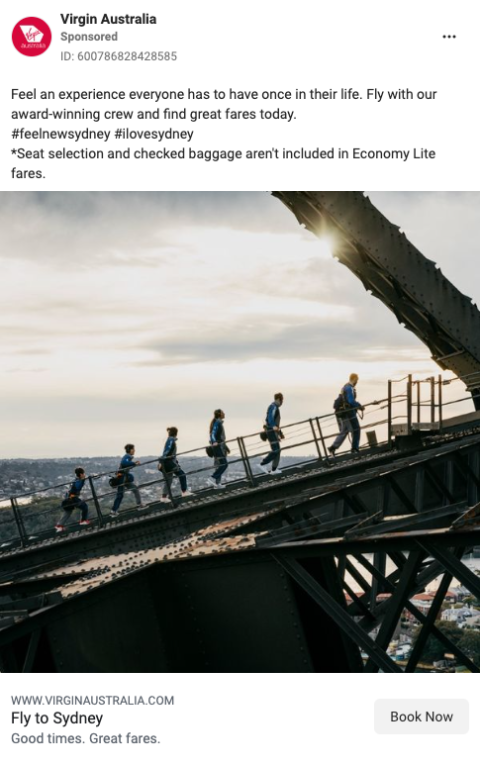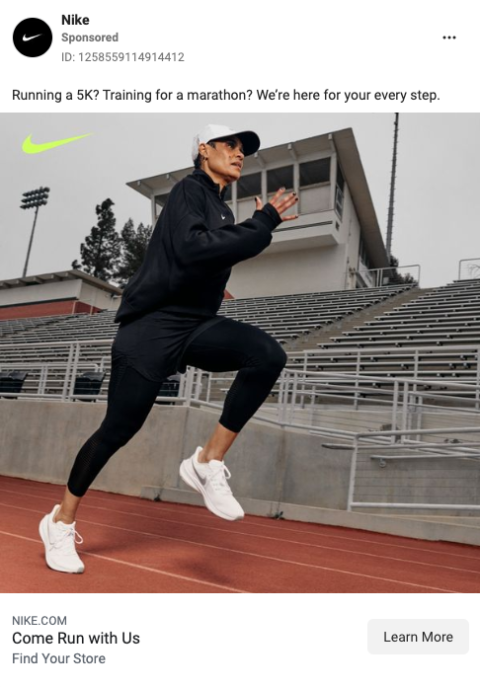Some people still believe that Facebook ads are not a good channel for generating conversions but that they drive many impressions and clicks of low value.
This preconception comes from the fact that Facebook is often still seen as the platform people primarily use to connect with friends and family, not the place where we “do business.”
As such, many brands underestimate the importance and potential of Facebook ads as a key acquisition channel.
In part, that is because perhaps we should start doing a better job of defining what a conversion is.
The problem is that, too often, we classify a conversion as the ultimate step in the acquisition funnel – and therefore, for most, a conversion is a sale or a transaction with a revenue value attached to it.
However, the reality is that conversions – or, we should say, conversion points – can be much more than that, and identifying them requires that we look past the sale or lead.
In the modern world – where the relationship between users and brands is ever so complicated due to the multiple ways and channels they can use to communicate and interact – every touchpoint is (or can be) as important as the last one.
Therefore, every interaction can be defined as a conversion, which means that savvy marketers and businesses must plan, track and measure accordingly.
So, now that we have more clarity on what a conversion is, how can you make the most of what a powerful medium Facebook is and create ads that convert?
For that, we have nine proven tips that are guaranteed to help.
1. Thoroughly Segment The Target Audience And Frame it With AIDA
First of all, you should always leverage the audience targeting capabilities of Facebook.
That requires mapping and planning your campaigns and ad sets to target different users with highly relevant ads that can capture their attention, generate genuine interest, turn that into desire, and ultimately action.
Where possible, smaller audiences will allow you to create more relevant and compelling ad copy that can resonate with your target audience.
The trick here is to find the right balance between audience size and the platform’s ability to gather enough data to optimize.
That said, the Attention, Interest, Desire, Action (AIDA) framework – which some define as “the four stages a consumer goes through before making a purchasing decision” – should be what underpins your strategic approach and keeps it all together.
2. Build Audience Personas And Use Them To Define Your (Conversion) Targets
A clear audience profile will always help, so if possible, you should create personas representing your key segments.
You must understand what motivates your customers and what triggers you can leverage to make them take action and convert.
What is their need? What is important to them?
And how can you help them with that?
Are they moved by emotions, or are they more of a rational type that resonates with numbers and facts?
Understanding and answering these questions will allow you to create ads and copy that is more effective and likely to convert.
3. Leverage Psychological Triggers
Emotions move human beings.
We take actions because we have an intent, whether that is to fulfill a need or for simple gratification, like entertainment.
But for that to happen, we need to create a connection. Therefore, we need a trigger.
In the example below, it is difficult not to feel connected!
-
 Screenshot from Facebook Ad Library, June 2022
Screenshot from Facebook Ad Library, June 2022
Also, one of the most powerful triggers is fear of missing out (FOMO).
When relevant, highlight such elements in your ad copy as scarcity, time-sensitive offers, or anything that might be too good to be dismissed.
4. Address Your Audience’s Pain Points And Highlight The Benefits You Can Provide
With a thorough understanding of your target audience comes the opportunity to clearly address their pain points within the ad copy and highlight the benefits your solution will provide them.
If you have done a good job segmenting and narrowing down your target audience, you can leverage empathy to connect and engage with them.
Letting your prospecting customers know that you understand their problem and can help them is a surefire way to reach those users that are more likely to respond to your ads, and might be ready to convert.
Once you grab their attention, clearly (and concisely) stating how you will help should focus on enticing them to take action.
A strong ad call to action (CTA) is also strongly recommended.
The example below shows how Nike leverages one of the biggest pain points for people that want to exercise: motivation.
Notice also the strong CTA: “Come Run with Us.” Clear, straight to the point, effective.
-
 Screenshot from Facebook Ad Library, June 2022
Screenshot from Facebook Ad Library, June 2022
See more on the CTA down below.
5 Have An Option For Those That Might Be Less Driven By Emotions
While the emotional trigger can work for most people, a more rational approach might drive others.
For those keeping it to the facts, using numbers and stats will likely work best and drive conversions instead of emotional triggers – which might also be more relevant to certain industries than others.
For example, while you can see how some people might resonate with numbers and stats when talking about a home loan or mortgage, the same might not be true for the travel industry if you are selling packaged holidays.
6. Always Have A (Strong) CTA
No matter what the ad’s objective is, whether to attract attention, instill desire, or trigger an action, the ad copy should always have a clear, strong, and unique CTA.
Even in adverts, people respond to instructions – likely because they don’t want to think about what they should do.
Guiding them in their decisions is more likely to be successful than leaving them wondering.
7. Test, Test, And Do More Testing
Going back to the example above and the importance of thoroughly segmenting our target audience, it goes without saying that a solid testing framework should always complement the segmentation.
It is key to the success of any campaign not only to try different messaging and targeting settings but also, to evolve and proactively refresh the creative, and specifically, in your case, the copy.
That way, the ads remain fresh and relevant, increasing your chances of converting.
8. When Possible, Always Tell A Good Story With Your Ads
Talking about ads that evolve with time, I strongly believe that advertisers often miss the opportunity to deeply engage with their audiences in favor of what (for me) is more like instant gratification.
As marketers, we are often so focused on getting “that” conversion that we ignore the fact that with a (large) part of our audience, the first job is helping them move through the funnel.
Yes, we have talked about the segmentation of the audience and the necessity of ads that are relevant to each stage, but what about having the vision to connect all of those stages through consistent comms and messages that also evolve?
In simple words, what about storytelling?
If you can create ads and copy that tell a meaningful story that resonates with your audience, your chance to convert will certainly grow with it.
In a storytelling format, you can address the pain points, offer solutions that benefit your audience, validate them with social proofing, address the barriers and reservations your audience might have that stop them from converting, and more.
9. Use Creative And Copy That Are Ad Format-Specific
This one also gets overlooked too often.
In an attempt to be efficient and effective with time, we often make the mistake of using or adapting the same creative and copy for different ad formats.
But the reality is that different ad formats are meant for different contexts and, as such, offer the opportunity to speak to our customers in different ways.
For example, Facebook and Instagram Stories are very different from carousel ads and therefore require a different approach.
With Stories, it’s important that the copy is on point and complement the image or video, whereas that might not necessarily be the case if the copy accompanies a single image, carousel, or video ad.
For the latter, the ad copy can take more of a hero role and, while still supporting the creative, help address some of the points we mentioned earlier (i.e., pain points, benefits, etc.).
Conclusion
While many of the tips we have discussed today are great for improving our Facebook ad copy and can be transferred to other platforms, too, mastering the art of copywriting is a fine skill that takes talent, perseverance, and resilience.
What might work for some might not work for others.
Our surefire tips to write Facebook ad copy that converts are like the good ingredients of a good recipe, but to make that great, it takes a good chef and hard work.
More resources:
- Facebook Ads: Who’s Best At Earning The Click & How It’s Done
- 4 SEO Copywriting Tips For Sharper, More Effective Copy
- How to Advertise on Facebook: A Beginner’s Guide
Featured Image: Alissa Kumarova/Shutterstock





